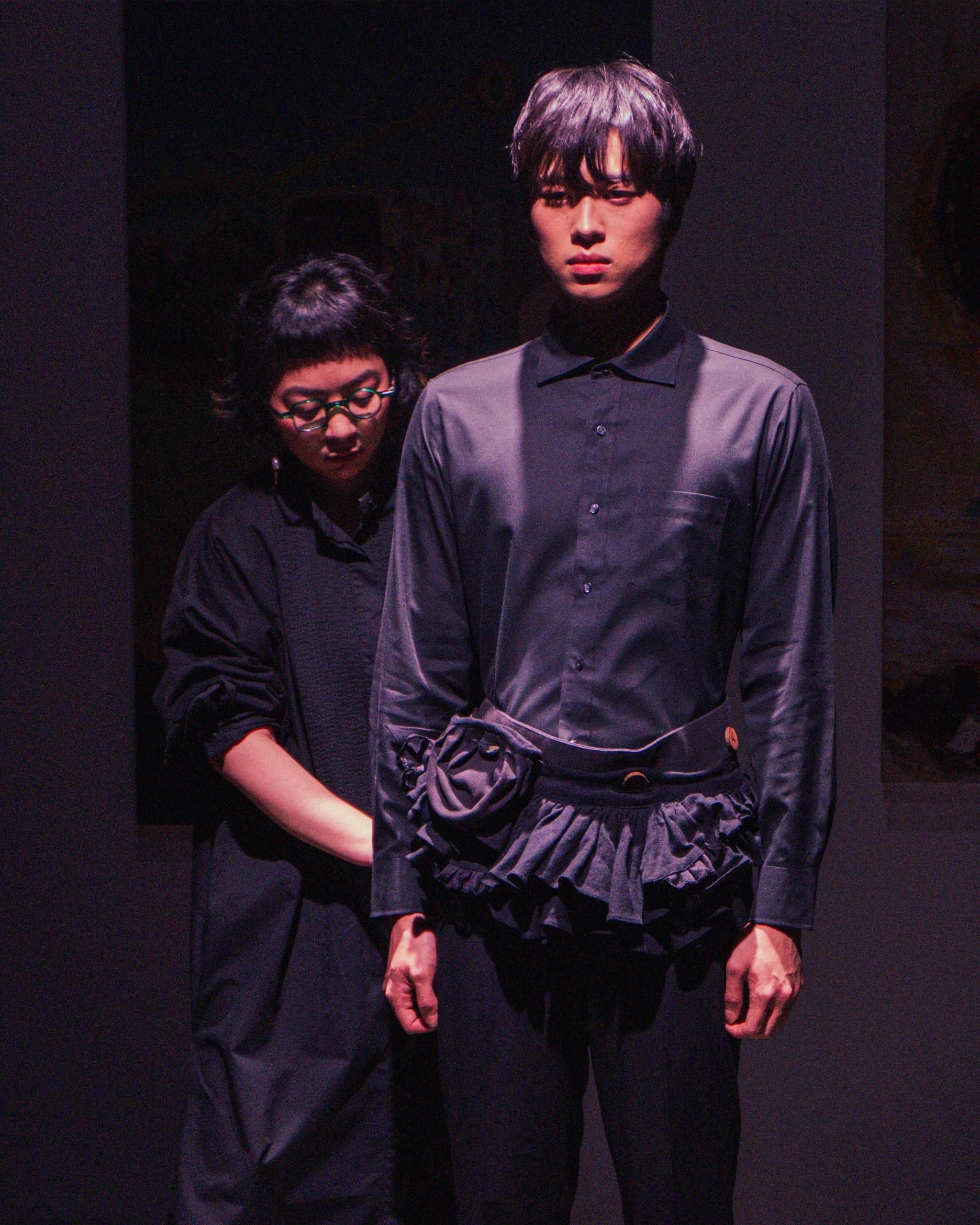Gabbie Sarenas ties a ruffled attaché. Makie Cruz
Here is an exclusive look at Gabbie Sarenas’ Off the Record, the designer’s love letter to herself.
In 2009, avant-garde Belgian designer Martin Margiela left the label he built. According to The New York Times, he left to “explore other mediums” and “enjoy pure creation without boundaries.” Parallels could be drawn between Filipino designer Gabbie Sarenas and the prolific designer.
Although every collection was rooted in art and concept, both designers felt a need to veer away from a commercial and industrial process. Their body of work is more than fashion itself, it’s a reflection of their identity. Fashion can be used as a vehicle of a new beginning, especially in the face of stagnancy.
“Martin Margiela is one of my favorite fashion rebels because he [bravely parted from] fashion and used a different tool to fulfill [his] soul and express his creativity. [In the same vein], I’m exploring a different avenue to present my work,” Sarenas tells Vogue Philippines.
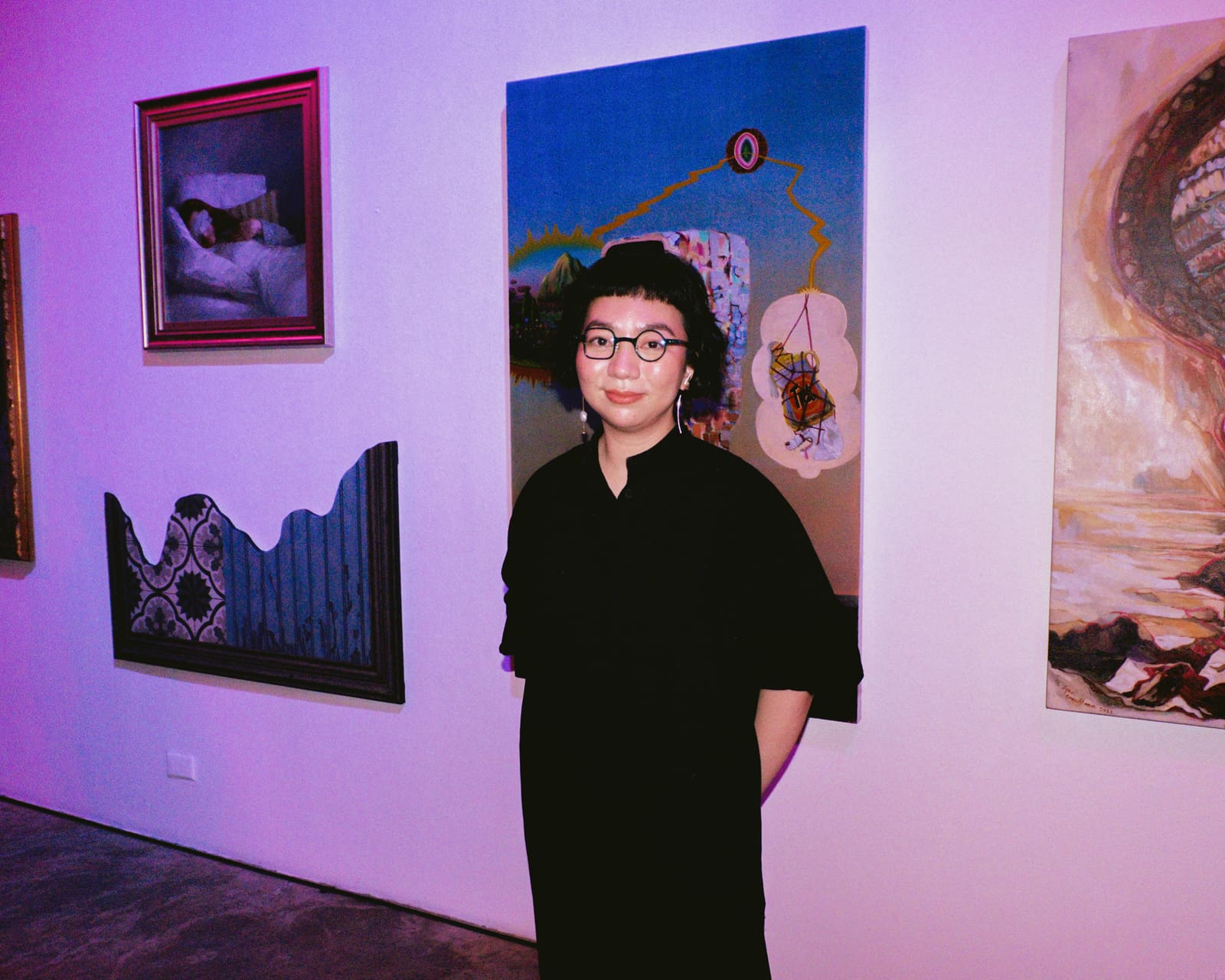
Gabbie Sarenas is known to shine a spotlight on Filipino identity through her billowing piña attire. Her “Hindrika Bouquet” apron has become a cult-favorite, making rounds in the fashion circuits within the Philippines.
With vibrant outlines and intricate embroidery of distinctly Filipino flora and fauna motifs, Sarenas’ selection of barongs, bibs, detachable peter pan collars, and flouncy dresses (with an abundance of ruffles) always contains a sense of charm and drama. Unabashedly joyful and versatile, her collections have continuously put a game-changing flourish on traditional piña clothing.
For her latest offering, Sarenas looks inward. Divulging her true feelings and reflecting on her own modus operandi, the 35-year-old presents a new take on her own style and fashion philosophy. Inspired by Margiela’s route toward authenticity, she embraces a new process, one that is personal and private.
An Internal Exploration
“Off the Record is Gabbie Sarenas’ breakup letter,” James Luigi Tana says in the label’s write-up. When asked about the breakup she states, “It’s been seven years since I had the brand [and] this is [my] seven-year itch in a way.” The seven-year itch is a popular belief when one feels a sense of stagnation in a long-term relationship. For Sarenas, this relationship is her affinity to her process.
“[For the] Chinese, every seven years you have a different cycle. When the world halted, [I was] forced to have a conversation with [myself] on what [my] purpose in life is,” Sarenas continues.
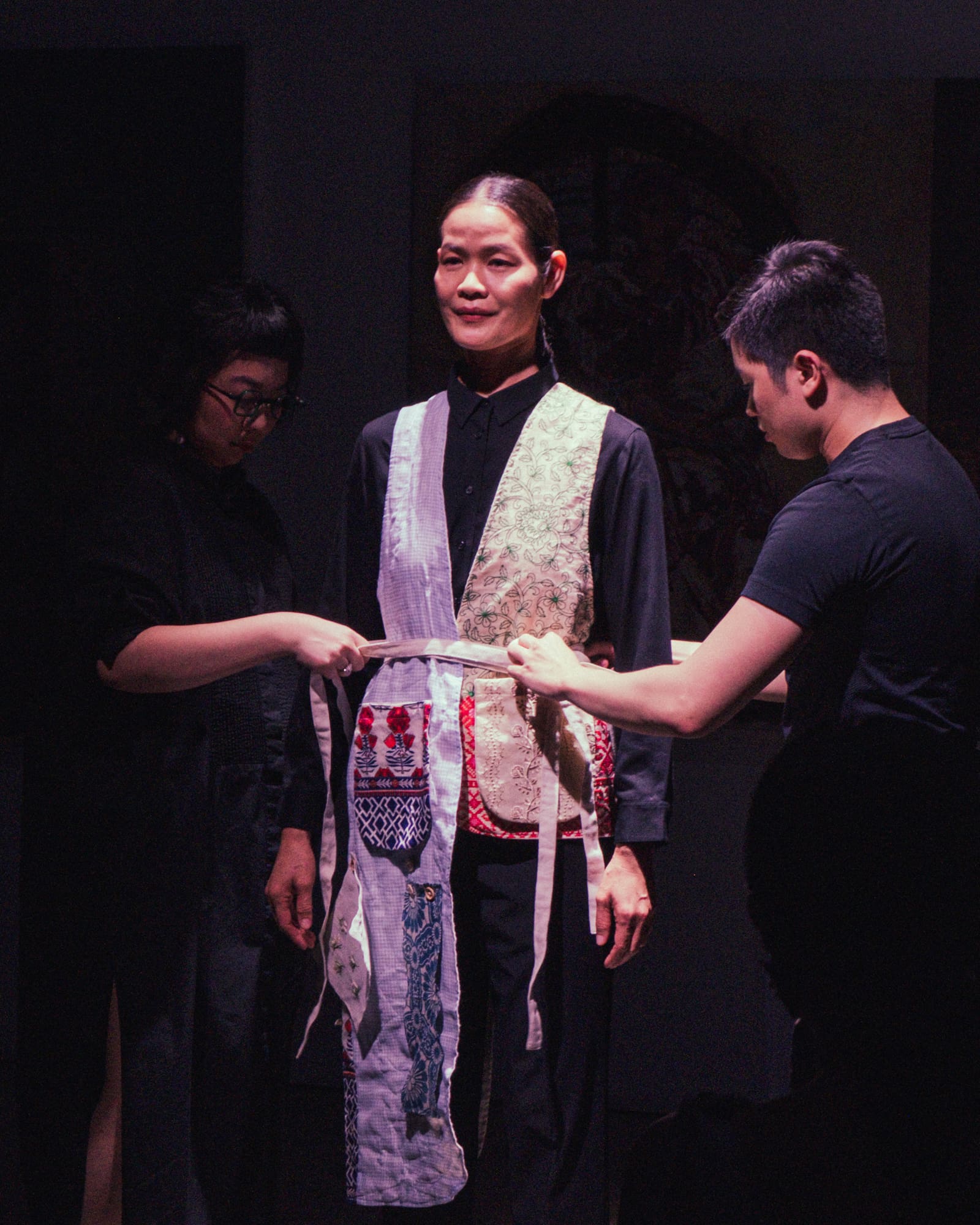
She began feeling a self-discrepancy, a departure from her old persona and the need to leave her former approach to design behind. “When I started, I looked at things from an impressionist perspective: bright-eyed, romantic, and hopeful,” she says, “Now, I see [fashion] with edges and [elements of] darkness like when [one’s] brain is slowing down.”
Noticing that her practice was decelerating, Sarenas paused and accepted the discomfort of being in a new phase of her life. “It was a change in my process and [it can be called] growth,” she asserts. “[Overall] it was very uncomfortable for me because I used to be very fast [in my process].” There’s a longing for her past life, she says, when she created things in one swift motion with hints of joy in every movement.
She alludes to this time in her life as “a brain fog,” especially when she tries to create and use her conventional creative process. What this collection communicates is clarity, where the designer hones in on her own capabilities and what suits her personally. “It doesn’t work anymore and it has to be [done] in a different manner,” she says. For Sarenas, her collections needed to be constructed in a different manner altogether with her instinct as its guiding hand.
“This is my brain telling me to (not exactly slow down) but look at it from a different perspective,” she says. “It’s a different creativity.”
Leaving the past where it belongs, Sarenas welcomes the change with open arms. “Why am I fighting my season? I’m meant to be here and be present,” she remarks, “For years, [my collections have been about] my love letter to the Philippines, an interpretation of Philippine history, and a sense of nationality. Now, it’s for myself.”
One might posit that there are two Gabbie Sarenas, poles apart yet somehow connected. On one side is the designer that champions whimsical interpretations of Filipino design and textiles. This is the Sarenas whose aesthetic is more pared back. With her touch, attachés become an extension of one’s personal style and character.
Although on different sides of the spectrum, this collection can be likened to a two-faced coin, a dissipating bridge between the past and the present. “Of course, there’s still inspiration from Philippine history and there’s that bridge, but it’s not completely the same,” she says. “The aesthetics that I have will still be there, but eventually it will [evolve].”
The Gabbie Sarenas essence can be found in her use of volume, vintage fabrics, and the way she piles on material to create her lighthearted garments. “Generally, we’ve [kept] what Gabbie Sarenas is known for such as the vintage buttons and fabrics from Japan that are 80-years-old,” she says.
Renewal
Last night, the presentation consisted of two models standing a meter apart from each other, taking turns being in the spotlight. Each model acted as a blank canvas dressed head-to-toe in a black ensemble.
Every time light was cast upon the model, a different soundtrack played, evoking a diverse set of emotions. As the music played, Sarenas would descend upon each model and was handed a one-of-a-kind garment to be layered on top of the ensemble.
She would drape, adjust, and fasten every piece as if she were conducting an orchestra. In a trance, she tied waist belts, added messenger bags, layered patterned aprons, and assembled deconstructed vests on each model in a distinct Sarenas fashion.
The collection comprises a multitude of viewpoints. Every garment can be layered or they can stand alone. “There’s always going to be a purpose for [every] item,” Sarenas adds.
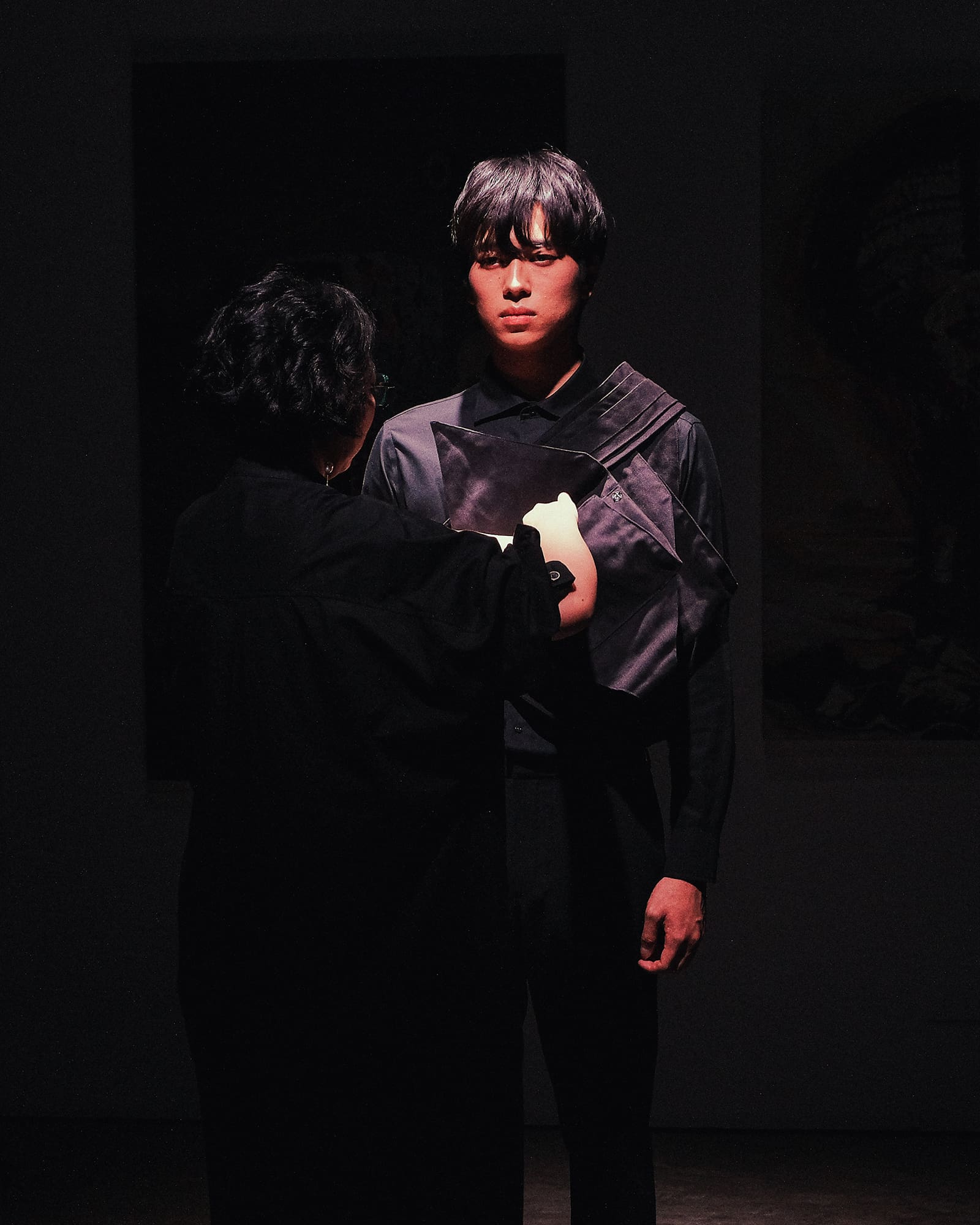
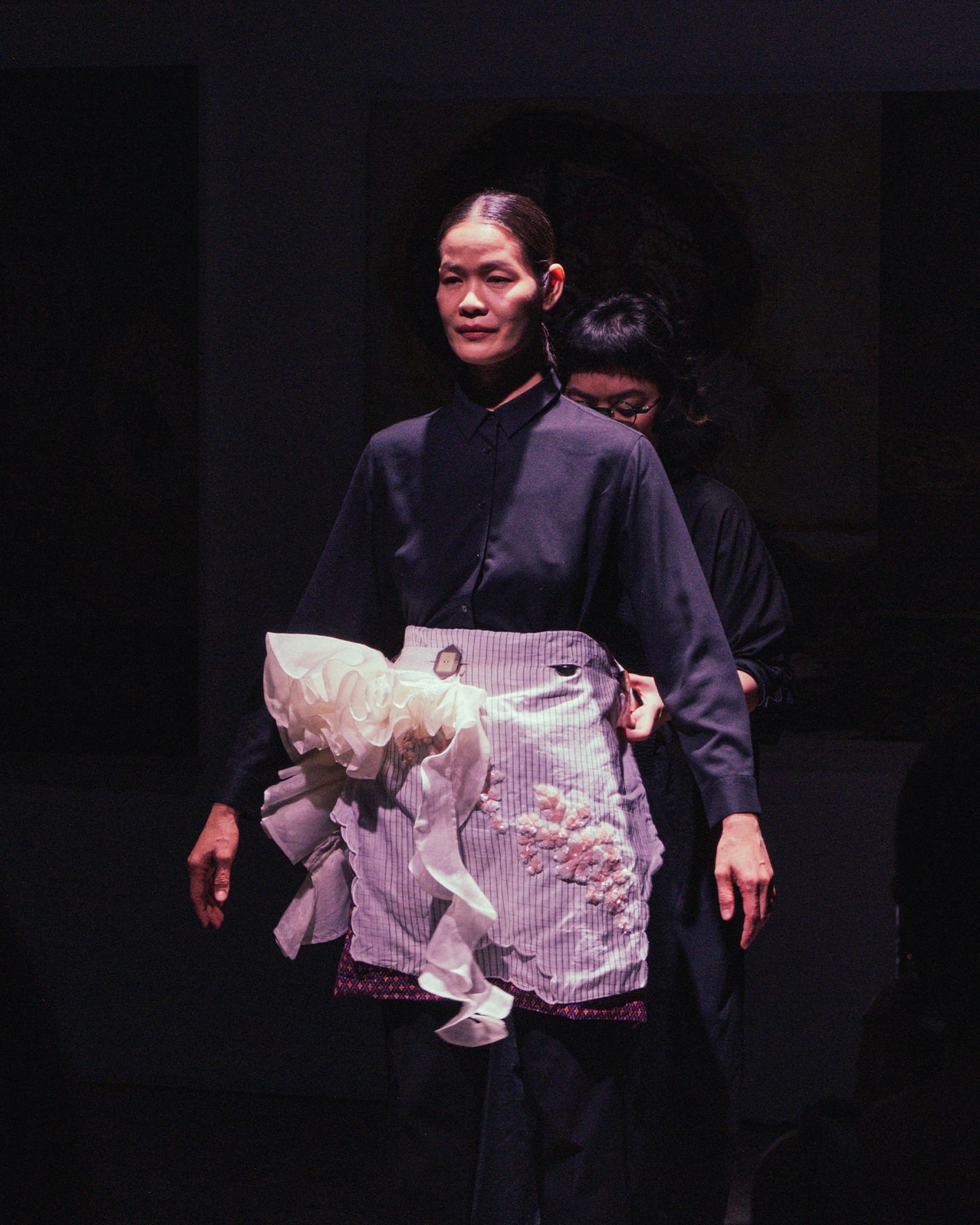
A highly personal and organic show for the designer, it was as if she invited viewers into her studio. Every spectator was given the ability to peer into her creative process in digestible chunks.
For her concept, she says that “it’s a different process that’s being presented to you. I really see [things from a Cubist perspective now]. In cubist paintings, you’d really have to look at it to understand it and maybe you’d see something else from what the artist is presenting.”
With a new life, new beginnings, and tenderness as its focus, the collection was a sensory overload of detail into her design process.
A Creative Journey
Rethinking the framework in which she’s operated within during the past, this capsule reflects the ebb and flow of her creativity. A sense of curiosity for how this time may pave the way for further transformation shines through her latest offering.
“You have to be forgiving with [your growth] because you’re not the same person anymore,” she says. “I’m [recognizing] how I’m growing as a designer and as a person.” Although stepping out of one’s box “can be overwhelming, it can be interesting if you learn how to be open with it.”
Using adversity as a catalyst, Sarenas leans into what makes her tick and her strengths. “Before you dismantle something, you have to know how to make it,” she says. “Once you do, you can be comfortable with dismantling it because you know how to do it.” Breaking down her process to reveal the essence of Gabbie Sarenas resulted in a breakdown of her capsule into 12 innovative accessories and 12 separate narratives. Each component led to the culmination of her creative journey: renewal.
“[Change] makes [collections] more interesting because there’s a throw in the mix. It’s not the same because it’s a different point of view,” she continues, “It’s part of growing up and [showing] a different facet of yourself.”
For the designer, this presentation signals an inspiring and authentic view of what’s to come for the label.
“The future can actually be something you need and something better than what you envisioned,” she says. “This is the curveball that I never saw coming, but I made it work.”
